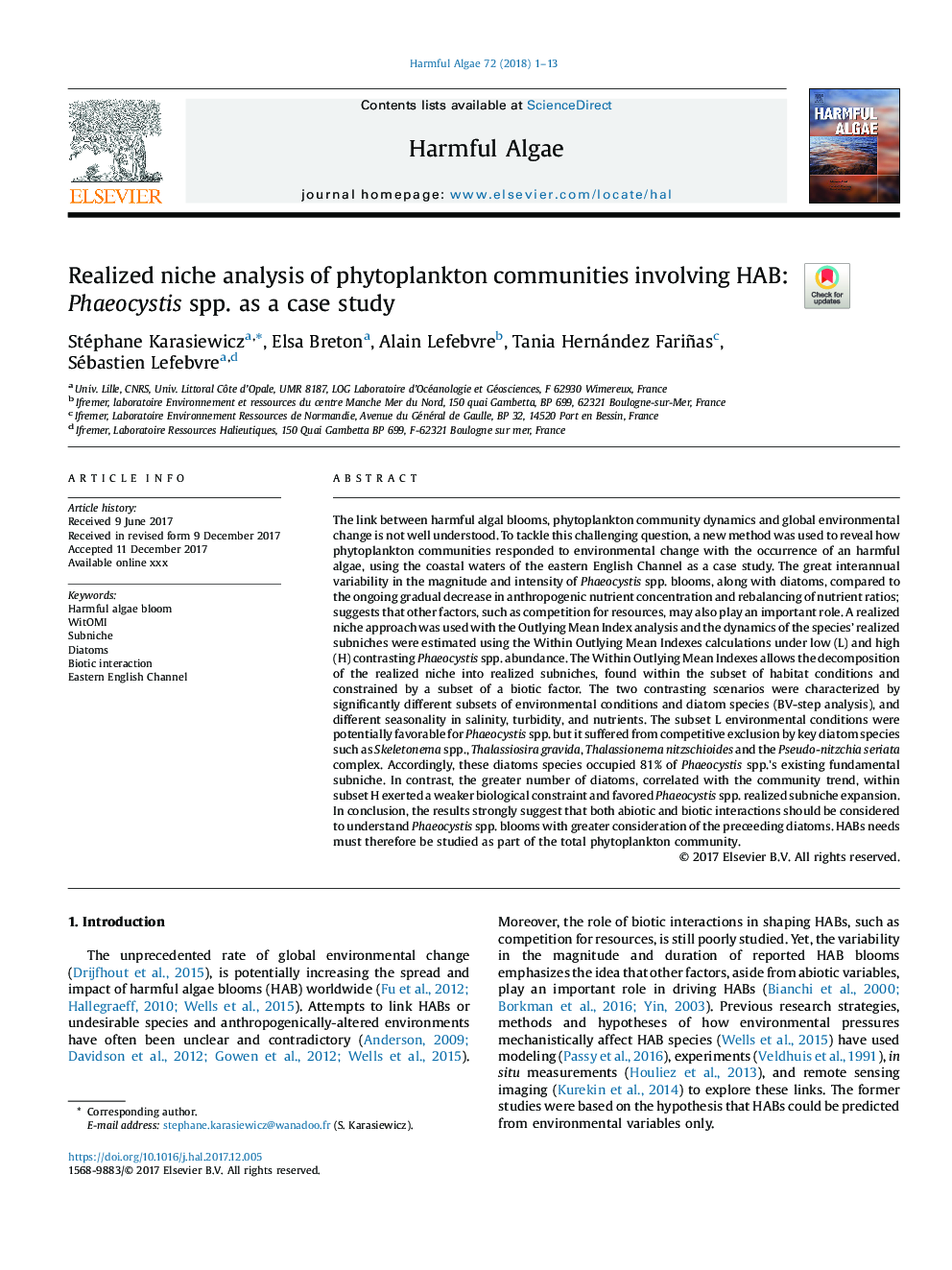| کد مقاله | کد نشریه | سال انتشار | مقاله انگلیسی | نسخه تمام متن |
|---|---|---|---|---|
| 8885704 | 1626900 | 2018 | 13 صفحه PDF | دانلود رایگان |
عنوان انگلیسی مقاله ISI
Realized niche analysis of phytoplankton communities involving HAB: Phaeocystis spp. as a case study
دانلود مقاله + سفارش ترجمه
دانلود مقاله ISI انگلیسی
رایگان برای ایرانیان
کلمات کلیدی
موضوعات مرتبط
علوم زیستی و بیوفناوری
علوم کشاورزی و بیولوژیک
علوم آبزیان
پیش نمایش صفحه اول مقاله

چکیده انگلیسی
The link between harmful algal blooms, phytoplankton community dynamics and global environmental change is not well understood. To tackle this challenging question, a new method was used to reveal how phytoplankton communities responded to environmental change with the occurrence of an harmful algae, using the coastal waters of the eastern English Channel as a case study. The great interannual variability in the magnitude and intensity of Phaeocystis spp. blooms, along with diatoms, compared to the ongoing gradual decrease in anthropogenic nutrient concentration and rebalancing of nutrient ratios; suggests that other factors, such as competition for resources, may also play an important role. A realized niche approach was used with the Outlying Mean Index analysis and the dynamics of the species' realized subniches were estimated using the Within Outlying Mean Indexes calculations under low (L) and high (H) contrasting Phaeocystis spp. abundance. The Within Outlying Mean Indexes allows the decomposition of the realized niche into realized subniches, found within the subset of habitat conditions and constrained by a subset of a biotic factor. The two contrasting scenarios were characterized by significantly different subsets of environmental conditions and diatom species (BV-step analysis), and different seasonality in salinity, turbidity, and nutrients. The subset L environmental conditions were potentially favorable for Phaeocystis spp. but it suffered from competitive exclusion by key diatom species such as Skeletonema spp., Thalassiosira gravida, Thalassionema nitzschioides and the Pseudo-nitzchia seriata complex. Accordingly, these diatoms species occupied 81% of Phaeocystis spp.'s existing fundamental subniche. In contrast, the greater number of diatoms, correlated with the community trend, within subset H exerted a weaker biological constraint and favored Phaeocystis spp. realized subniche expansion. In conclusion, the results strongly suggest that both abiotic and biotic interactions should be considered to understand Phaeocystis spp. blooms with greater consideration of the preceeding diatoms. HABs needs must therefore be studied as part of the total phytoplankton community.
ناشر
Database: Elsevier - ScienceDirect (ساینس دایرکت)
Journal: Harmful Algae - Volume 72, February 2018, Pages 1-13
Journal: Harmful Algae - Volume 72, February 2018, Pages 1-13
نویسندگان
Stéphane Karasiewicz, Elsa Breton, Alain Lefebvre, Tania Hernández Fariñas, Sébastien Lefebvre,